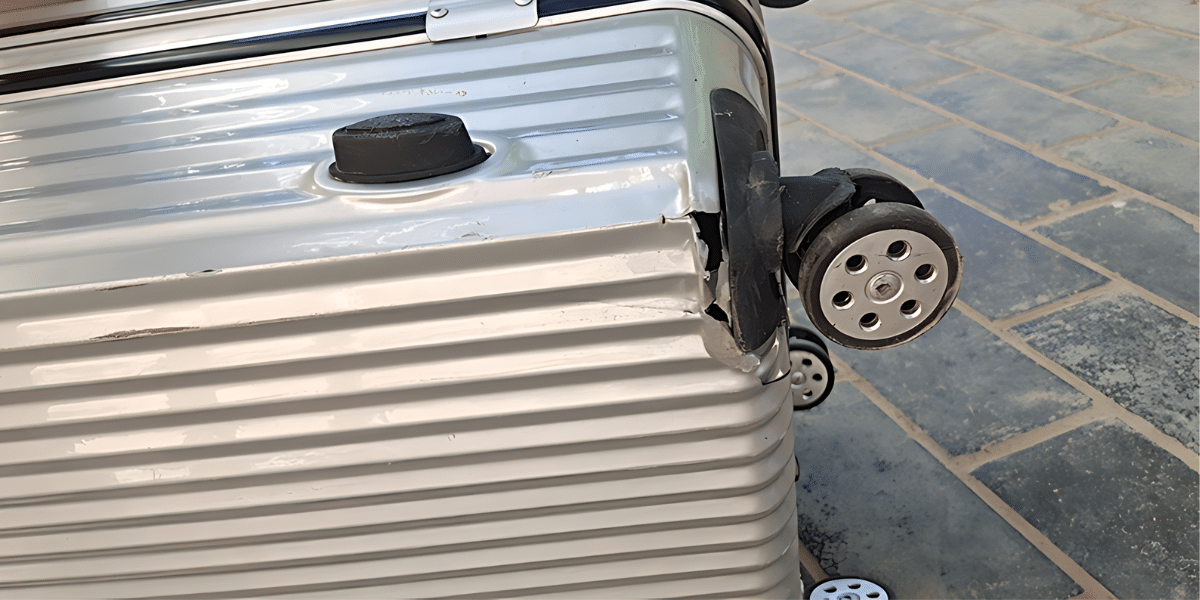When traveling, one of the most frustrating thing is dealing with damaged luggage, especially during flights. It’s common for suitcases to get broken or crushed during handling and transfers. So, why does your luggage seem to get damaged easily while others remain intact? Here are some essential tips to help you protect your travel luggage.
Common Mistakes You Should Avoid
First, it’s essential to choose the right luggage to prevent damage or crushing during air transport. The material should be hard, tough, and pressure-resistant. Leather, nylon, or cheap plastic luggage cases won’t meet these requirements.
Next, opt for luggage cases with metal corner guards. Feedback from airlines indicates that most luggage damage occurs at the corners, with direct damage to the cases being rare.
Weight and size are also crucial factors. Heavier or larger luggage tends to be stacked at the bottom during air cargo transfer, increasing the likelihood of being crushed or deformed. Even aluminum suitcases can’t escape this. Additionally, luggage handlers’ capacity is typically between 25 and 35 kg. Exceeding this weight means your luggage might be thrown directly by the staff.
Last but not least, the shape and handles of luggage are crucial elements you can’t overlook. Modern travelers, always on the lookout for fashion and individuality, often opt for uniquely shaped luggage. While these pieces may catch the eye, they often sacrifice practicality for style and are prone to damage during air travel. Additionally, some brands design luggage with minimal handles, sometimes only offering handles on one side. This oversight makes it difficult for porters to handle the luggage, often leading them to resort to tossing it.
Follow the Rules and Get to Know Your Flight
Understanding airlines often comes down to how often you fly. For newcomers, it’s crucial to know each airline’s rules ahead of time and get familiar with your upcoming flight. To help you avoid any unpleasant experiences, here is a guide on airline regulations worldwide.
When talking about flight conditions, one is generally referring to the number of passengers, flight duration, and the number of times your luggage gets transferred. More passengers or longer flights usually mean more luggage transfers, which unfortunately increases the chances of your luggage getting damaged.
What to Look for in a High-Performance Luggage
When you’re on the hunt for high-quality luggage, whether for style or practicality, start with the reputable brands on the market. Dive deep into your research—evaluate each brand’s quality and features, and then compare prices. The Reddit community is a great spot to find unbiased user reviews. But don’t stop there. Check out social media platforms like Facebook and TikTok. Look for influencers who’ve posted honest reviews, unboxing videos, and shared their experiences with the luggage you’re eyeing.
Next, pick a suitcase that fits your travel needs, like whether you need replaceable or fixed wheels. For frequent flyers, replaceable wheels are a better option. If they get damaged during a flight, you can simply swap them out and keep using your suitcase, unlike fixed-wheel ones that might need to be scrapped.
Taking Care of Your Luggage
Keeping your luggage in good shape is key to making it last longer. If you travel a lot, your suitcase is more likely to get damaged. Here are some simple tips to help maintain your luggage:
- Avoid Overloading: Don’t pile too many things on top of your suitcase.
- Check for Rust: If your luggage has metal parts, check them regularly for rust.
- Protect from Sunlight: Keep plastic luggage out of long-term sunlight exposure.
- Keep Metal Dry: Make sure metal suitcases stay as dry as possible and avoid getting them wet.
These are just a few issues I’ve encountered as a frequent traveler, but they’re not the only things that can damage your luggage. Every travel situation is unique, so use your best judgment to keep your bags safe.
Published By: Aize Perez

















